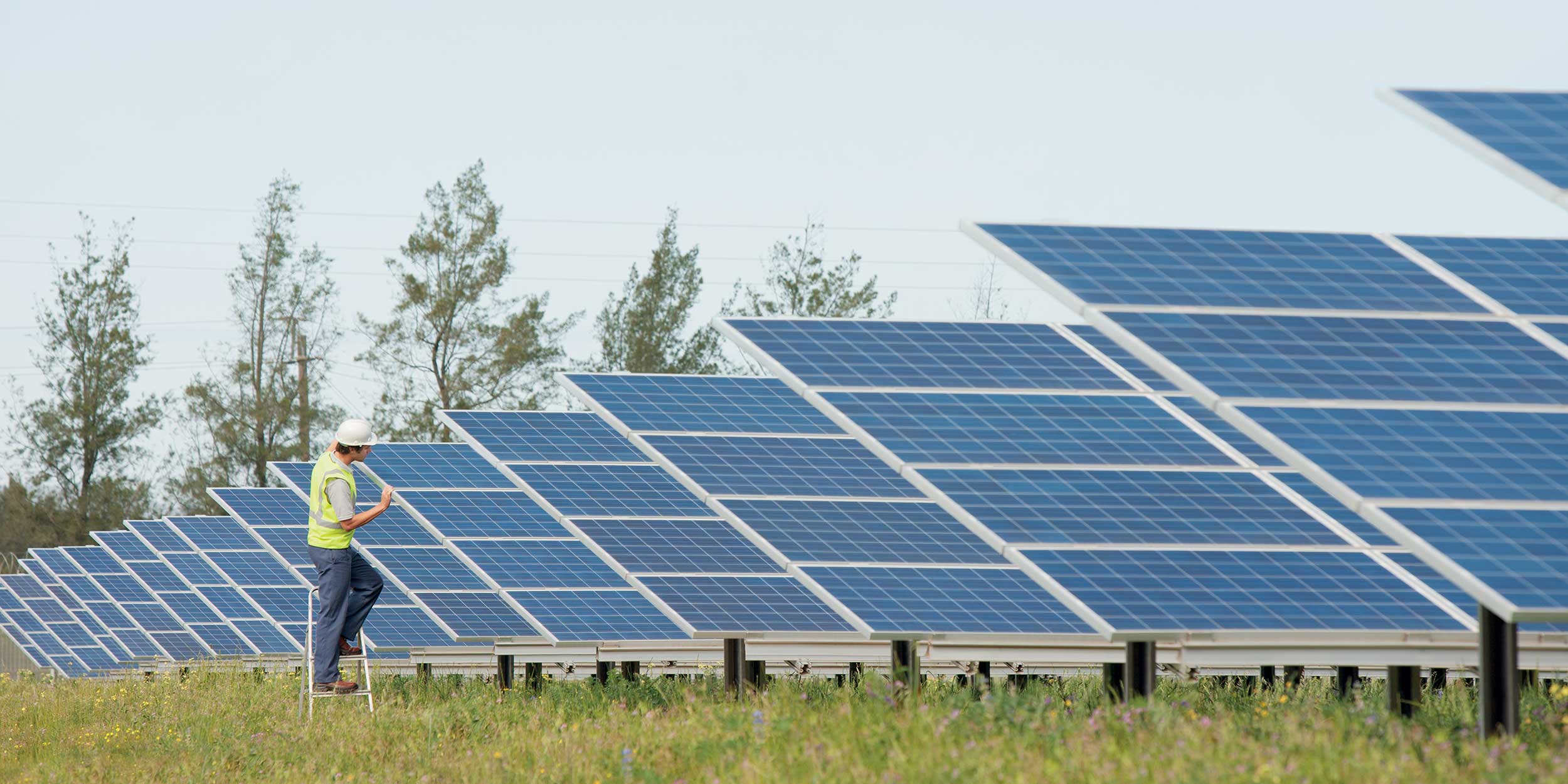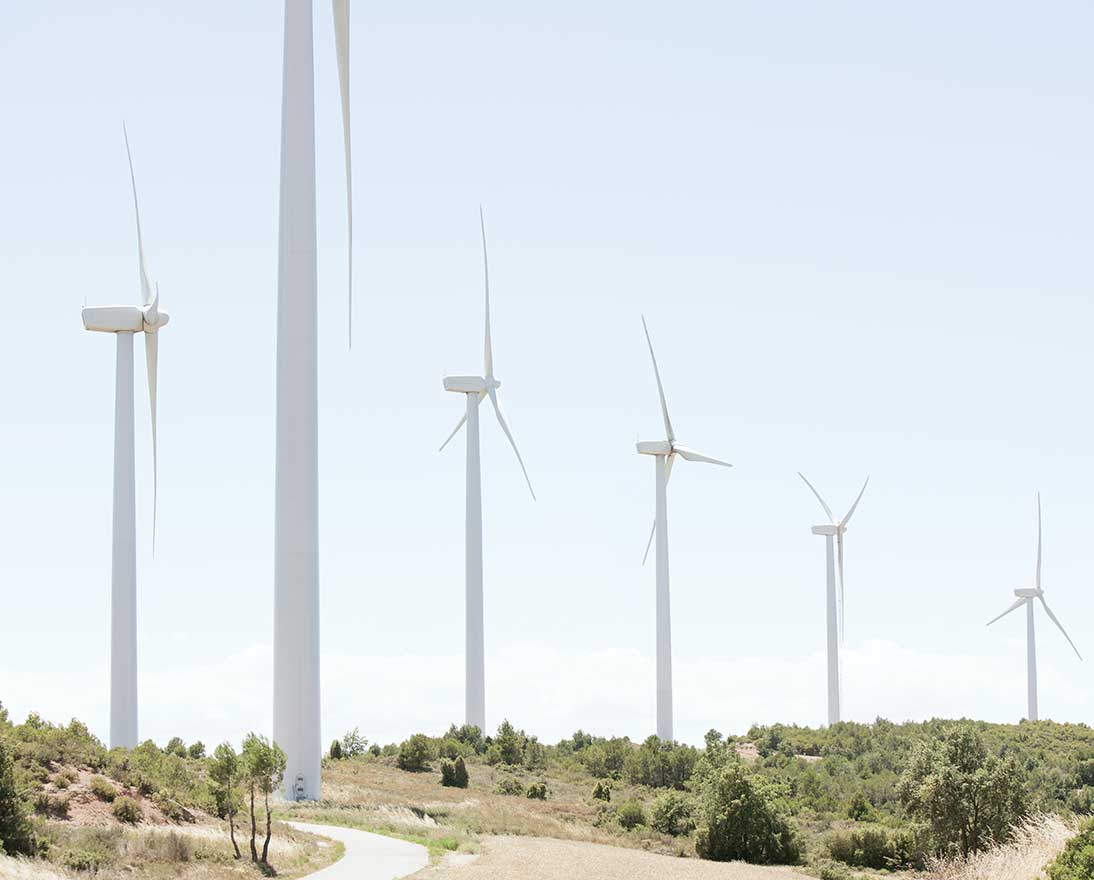Environmental Risks in the WEF Regional Risks for Doing Business Report, 2019 - Why don’t they feature in the top ten global risks?
Global risksArticleOctober 1, 201910 min read
By John Scott, Head of Sustainability Risks, Zurich Insurance Group
Environmental challenges for business
It was somewhat surprising at first glance that environmental risks did not feature in the top ten regional risks of doing business in this report. On a deeper analysis, it becomes clear that environmental risks, especially the risks related to climate change are important to business leaders, not only in the physical risks in specific regions and countries, but also in the economic risks related to climate change transition risks.
The contrast with the WEF Global Risks Report, where environmental risks are the most highly rated global risks, is stark. In part this is related to the nature of the respondents to the surveys that underpin the two reports. The World Economic Forum’s Executive Opinion Survey on which the Global Risks Report is based on, is driven by the Forum’s global multi-stakeholder network, which has a broader demographic, particularly amongst the younger survey respondents who may naturally be concerned about longer-term risks that they may have to deal with as older adults and business leaders. Whereas the regional risks of doing business report, reflects the opinions of current business leaders, burdened with solving many short and long-term risks.
Physical Risks of Climate Change are a clear and present danger
“Extreme weather events”, “failure of climate change adaptation” and “natural catastrophes” were ranked in the top ten risks for business leaders in East Asia and the Pacific and North America. This reflects the vulnerabilities of countries in these regions due either to rapid global warming, water stress, prolonged periods of drought and increasing risk of devastating wildfires, or the more obvious physical effects of climate change such as tropical storms and flooding.
Nowhere is this more clear than in East Asia and the Pacific, where environmental risks are the leading concerns for doing business, with “natural catastrophes” and “extreme weather events” ranking first and fifth respectively. On a country basis, “natural catastrophes” were ranked first in Japan and New Zealand, whilst in Indonesia and the Philippines they ranked third. It’s hardly surprising given that the broader Asia Pacific Region witnessed 50% of all the natural disasters in the world during 2018. The disasters in the region claimed over 80% of the total deaths, affected over 50 million people, and totalled $56.8 billion in costs.
Asia Pacific not only suffers the most from natural disasters and extreme weather events in terms of loss of life, but its large and highly vulnerable population make the region especially susceptible to economic losses. Industrialization and unplanned urbanization have also led to environmental degradation, which weakens the region’s natural defences against disasters. If unchecked, natural catastrophes run the risk of further eroding East Asia and the Pacific’s economic competitiveness.
In other regions, the physical risks of climate change are also being felt by the business leaders. In the Middle East and Africa, water crises rated 7th out of the top ten risks. Hardly surprising for such an arid region. Desertification of the Sahel region in Sub-Saharan Africa and in the Horn of Africa are indications of how climate change is impacting the region. Meanwhile, in Sub-Saharan Africa “extreme weather events” and “natural catastrophes” topped the list in Mauritius and Mozambique. Looking back at the devastation caused by Cyclone Idai (March 2019), for which costs were estimated at over $2 billion dollars, that’s hardly surprising. Environmental risk continues to represent a potential blind spot for Africa that could considerably hinder the economic and social progress of that region. Something that was highlighted in last year’s report on “Climate Change and the Cost of Capital in Developing Countries” by the Imperial College Centre for Climate Finance and Investment, which looked at how climate risks are incorporated into the returns of developing market sovereign bonds.
Transition risks are “hidden” but very real for fossil fuel dependent nations
The most interesting aspect of the climate change related risks, were revealed in the strong link between economic risks, such as “energy price shock” and climate change transition risk. As countries start to transition to a low carbon economy and achieve the Paris Agreement goals, fossil-fuel producing nations are vulnerable to oil price drops driven by reducing oil demand. This paradox between being vulnerable to the physical effects of climate change and the transition risks is felt most strongly in Canada.
The survey and report reveals that In Canada, business executives rated “extreme weather events” and “failure of climate-change adaptation” highly and in the US, these two risks also broke into the top ten this year. Extreme weather was a constant in 2018 for North America, with the “polar vortex” creating extreme low temperatures and one of the snowiest Januaries on record for the Great Lakes region, whilst the North American coasts experienced unusually moderate weather. Canada, specifically is warming twice as fast as the rest of the world, with damaging impacts on physical infrastructure, coastal and northern communities, human health, ecosystems and fisheries.
The strange thing is that this paradox is not only a Canadian problem, but is seen in other regions and countries. While environment-related risks, such as “extreme weather events” and “natural catastrophes”, appear in the top risks for some Latin American countries, their absence from the top regional risks to business is noticeable. Other environmental risks, such as biodiversity loss did not appear in the top five risks for any individual economy in the region. This was really surprising given the recent highly publicised spat between President Bolsonaro of Brazil and President Macron of France after the recent G6 meeting this summer. Deforestation activity in the Amazon has become a matter of rising public concern, both regionally and internationally. If left unattended, this could become a leading risk for doing business for many businesses around the world, as destruction of the rainforest could exacerbate climate change, health, food security, trade, supply chain and reputational risks for business. The UNFCCC Conference of the Parties (COP) to be held in Chile in December 2019 will be an important marker for keeping environmental issues at the forefront for the region.
The paradox was also alive and well in Australia, with its heavily coal-dominated exports and where “energy price shock” was the most highly-rated business risk, compared to a region-wide ranking that placed it eighth. Australia is the only net energy exporter in the Asia Pacific region and energy prices in Australia have remained volatile as a result of the country opening its domestic natural gas markets to international trade, network distribution issues and the closure of some coal-based energy sources. It’s an irony, not lost on many people that the carbon-intensive economy of Australia, contributes to the global warming that creates the increasing impact of environmental disasters not only for that country but also for the globe.
This situation of the conflation of physical risks of climate change and the transition risks is repeated in South Asia, where Executives in the region not only ranked “water crises” as the number one risk for doing business (rising from fifth place last year), but also rated “energy price shock” fifth overall and the leading risk on a country level in Pakistan and Bangladesh. At a country level, water crises ranked as the topmost risk in India, second in Pakistan and fourth in Sri Lanka. The region is home to around a quarter of the global population but has less than 5% of the world’s renewable water resources, so the low per-capita water availability and high level of water use make South Asia one of the most water-scarce regions of the world. Additionally, water infrastructure is underinvested by global standards, making it difficult to manage the floods and droughts that afflict the region and that are expected to increase with climate change. Yet at the same time there is rising demand for energy in South Asia as populations and economies grow. The region is a net importer of crude oil and is building coal-fired power stations, even while trying to electrify rural communities by using renewable energy. The fossil-fuel sector is also highly subsidized, which only exacerbates the repercussions of market price fluctuations. Like the other regions the leaders of the South Asian nations need to get to grips with decarbonising energy and other economically important carbon-intensive sectors as quickly as possible to mitigate GHG emissions, slow down global warming and reduce the physical impacts of climate change on their nations.
Energy price shock - a trigger for an economically fragile world, that trying to transition to achieve the Paris Agreement goals.
A very clear message from the Regional Risks of Doing Business report is that the world economy is in an incredibly fragile position. The extraordinary period of ultra-loose monetary policy since the 2008 financial crisis did not solve the problem of indebtedness, but just managed it. The symptoms of this fragile economy have become clearer this year, with lower growth and higher debt increasing the likelihood of “fiscal crises”, the most highly rated risk in the report. “Fiscal crises” up from sixth in the adjusted 2018 results. The global public finance crisis is deeply related to four of the other top 10 risks about which chief executive officers are also the most worried. These include “unemployment or underemployment”, “energy price shock”, “failure of national governance” and “profound social instability”.
“Energy price shock” is the risk that is most clearly linked to transition risk, another risk that deeply concerns the private sector, although one that can materialize in the responses for different reasons. In the fossil fuel producing nations this is a key risk. In the Middle East and North Africa, this risk ranked first and “fiscal crises” second. Oil and gas remain primary sources of public revenue in this region, so a sharp fall in energy prices could require governments to make delicate spending adjustments, and more so when energy prices are heavily subsidized.
It’s not only the traditional oil-based producing economies, that are affected. The top moving business risk in Europe compared to 2018 is “energy price shock”, which rose eight places to become the fourth major risk, ranking first in Serbia and in the top five in another 12 economies (including France and Spain). Additionally, the transitional costs from the region’s number-one energy source, coal, to greener energies threatens to add further burdens on energy prices. As does the ability to deliver a “just transition”, in which jobs in carbon-intensive industries are changed, and the ability to reduce GHG emissions and limit global warming to Paris Agreement levels.
From John Scott, Head of Sustainability Risks, Zurich Insurance Group







